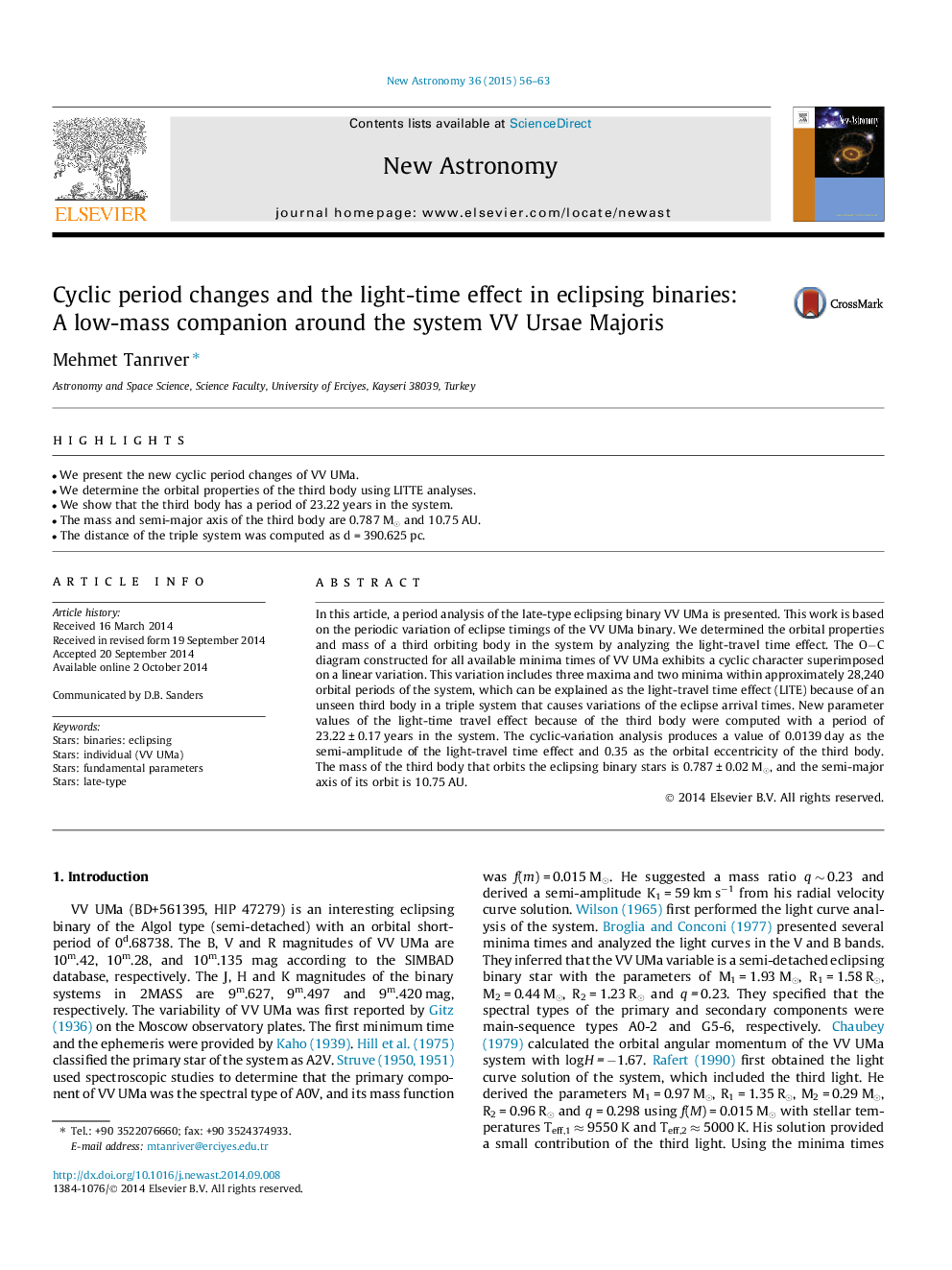| Article ID | Journal | Published Year | Pages | File Type |
|---|---|---|---|---|
| 1778881 | New Astronomy | 2015 | 8 Pages |
•We present the new cyclic period changes of VV UMa.•We determine the orbital properties of the third body using LITTE analyses.•We show that the third body has a period of 23.22 years in the system.•The mass and semi-major axis of the third body are 0.787 M⊙ and 10.75 AU.•The distance of the triple system was computed as d = 390.625 pc.
In this article, a period analysis of the late-type eclipsing binary VV UMa is presented. This work is based on the periodic variation of eclipse timings of the VV UMa binary. We determined the orbital properties and mass of a third orbiting body in the system by analyzing the light-travel time effect. The O−C diagram constructed for all available minima times of VV UMa exhibits a cyclic character superimposed on a linear variation. This variation includes three maxima and two minima within approximately 28,240 orbital periods of the system, which can be explained as the light-travel time effect (LITE) because of an unseen third body in a triple system that causes variations of the eclipse arrival times. New parameter values of the light-time travel effect because of the third body were computed with a period of 23.22 ± 0.17 years in the system. The cyclic-variation analysis produces a value of 0.0139 day as the semi-amplitude of the light-travel time effect and 0.35 as the orbital eccentricity of the third body. The mass of the third body that orbits the eclipsing binary stars is 0.787 ± 0.02 M⊙, and the semi-major axis of its orbit is 10.75 AU.
